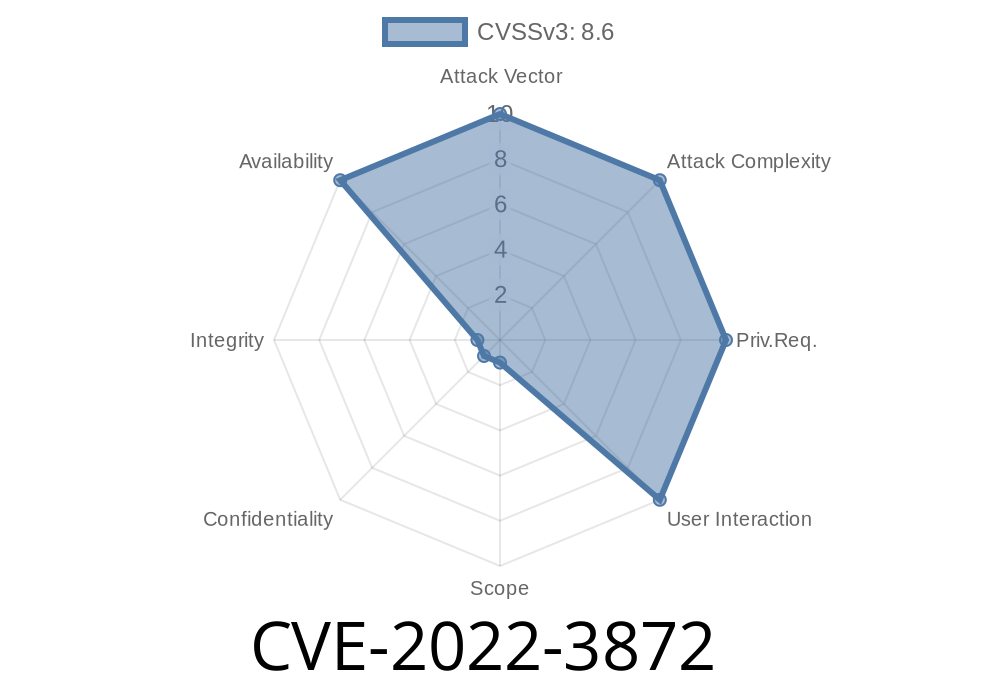CVE-2022-3872 is a recently discovered vulnerability in the SDHCI (Secure Digital Host Controller Interface) implementation in QEMU (Quick Emulator), a widely-used open-source emulator used for virtualization. This vulnerability arises from an off-by-one read/write issue which can be exploited by a malicious guest user to crash the QEMU process on the host machine and consequently causing a denial of service (DoS) condition.
In this blog post, we will delve into the details of this vulnerability, including the code snippets where the issue occurs, original references, and an overview of possible exploitation techniques. By carefully analyzing the issue, we hope to raise awareness and aid in patch implementation and mitigation strategies.
## The Vulnerability: Off-By-One Read/Write Issue in SDHCI Device
The vulnerability is in QEMU's SDHCI implementation when reading or writing to the Buffer Data Port Register. The Buffer Data Port Register is accessed through the sdhci_read_dataport() and sdhci_write_dataport() functions. In both functions, if data_count (the number of bytes transferred so far) is equal to block_size (the total number of bytes to be transferred), an off-by-one read or write issue occurs.
Here is the relevant code snippet found in sdhci.c:
static uint32_t sdhci_read_dataport(SDHCIState *s, uint32_t offset)
{
uint32_t ret;
if (s->data_count == s->blk_size) {
s->data_count = ;
return ;
}
// ...
if (s->data_count == s->blk_size) {
s->data_count = ;
}
return ret;
}
static void sdhci_write_dataport(SDHCIState *s, uint32_t offset, uint32_t value)
{
if (s->data_count == s->blk_size) {
s->data_count = ;
return;
}
// ...
if (s->data_count == s->blk_size) {
s->data_count = ;
}
}
As seen in the code, when data_count equals block_size, both functions reset the data_count to zero and return or continue executing the following code. This causes an off-by-one condition, which allows reading or writing outside the intended buffer boundaries.
Exploit Details
A malicious guest user could take advantage of this off-by-one issue by deliberately crafting data transfers to have a data_count equal to block_size. Upon reaching this condition, QEMU's SDHCI implementation would attempt to read or write data outside the intended buffer, ultimately causing the QEMU process on the host machine to crash.
Crashing the QEMU process would lead to a denial of service condition for the host, potentially disrupting operation for other virtual machines or users sharing the same host. This is a significant security concern, as DoS attacks can lead to loss of processing power, degraded functionality, and ultimately financial loss for service providers relying on QEMU's virtualization capabilities.
Mitigation and Fixes
The vulnerability has been reported to the QEMU developers and is acknowledged by the maintainers. A patch has already been submitted and is pending review and integration into the upstream QEMU repository. The patch addresses the off-by-one issue by adjusting the comparison and avoidance of reading or writing outside the intended buffer range.
Users can protect themselves from this vulnerability by keeping their QEMU installation up-to-date and applying the patch when it becomes available. Additionally, users can implement security best practices such as isolating virtual machines from one another to limit the potential impact of an exploited vulnerability.
Conclusion
CVE-2022-3872 highlights the importance of thorough code review and testing, especially in widely-used open-source projects like QEMU. The off-by-one read/write issue in the SDHCI device implementation exposes user systems to potential DoS attacks, significantly affecting reliability and availability.
By understanding the intricacies of this vulnerability and implementing proper mitigation strategies, users can protect themselves from its potential consequences. It is essential always to stay updated and maintain vigilance when it comes to security in the world of virtualization and emulation.
Timeline
Published on: 11/07/2022 21:15:00 UTC
Last modified on: 02/23/2023 01:35:00 UTC
